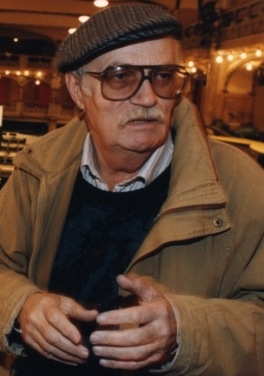Tuesday, April 29, 1986.
IN 1967, WHEN MONTREAL played host to the world, little Czechoslovakia stole the show. The single best bit of advice given Expo visitors that year was "check out the Czechs."
The word has got around. Artists with a reputation for international panache, Czechs are now much in demand as world's fair display designers.
At Expo 86, four of the show's 65 exhibitors make use of their expertise. In addition to the Central European country's own national pavilion, Czech productions are featured at the Canada Pavilion, the Roundhouse and the Pavilion of Promise.
Radúz Činčera, the cinematographer who created Kinoautomat for Expo 67, is part of the team responsible for The Scroll, a three-theatre production for the Christian fundamentalist Pavilion of Promise. Separate 13-minute multi-media presentations focus on Creation, Christ and Eternity.
Jaromir Hnik, of Prague's Studio Shape, is director of the film Viva Edisons. A single-screen, 35mm celebration of man's irrepressible urge to invent, it is part of the Czech-inspired zaniness in The Roundhouse. Designed as a tribute to well-intended (though unsuccessful) innovations, it utilizes archival footage of some mildly mad young men and their ingenious machines.
Emil Radok, co-creator of Expo 67's Laterna Magika, produced and directed The Taming of the Demons, the multi-screen mood piece on view at the Canada Pavilion's Teleglobe Theatre. An examination of the nature of the communication process, Radok's motion picture appears on ten screens, nine of them conventional rectangles and the tenth a spinning sphere.
At Czechoslovakia's own pavilion, meanwhile, there is a reputation to be upheld. "After Laterna Magika in Brussels [1958] and Kinoautomat in Montreal, we would like to attempt a hat trick," says Dr. Činčera.
Working with half the $10-million budget available to the nation's Expo 67 pavilion builders, the Expo 86 planners have had to exercise considerable ingenuity in the development of simple yet effective new film presentations. Even more than at the Montreal fair, the emphasis is on visitor participation.
"Czechoslovakia is the cultural crossroads of Europe," says pavilion designer Jaroslav Smejkal. A balloon motif underscores the display's light-hearted approach to technology and integrates the exhibits with its major film presentations, Rondovision and Actorscope.
The above is a restored version of a Province Expo 86 preview feature by Michael Walsh originally published in 1986. For additional information on this archived material, please visit my FAQ.
Afterword: A story previewing the coming attractions at the Vancouver world's fair wasn't really the place for a discussion of recent political history. By saying that "Czechoslovakia is the cultural crossroads of Europe," the Czech pavilion's Jaroslav Smejkal was in fact making the point that his nation's spectacular performance at Expo 67 was the result of revolutionary social forces in his Soviet bloc country. They had produced a blossoming of the arts in the 1960s, including a significant "new wave" in Czech cinema. The ultimate result was the "Prague Spring" of 1968, a five-month period of political reforms that began with the election of Alexander Dubček as first secretary of the ruling Communist Party, and ended with the Soviet Union invading Czechoslovakia to "restore order."
Director Emil Radok was one of many Czech film exiles that relocated to Canada after the events of 1968. Settling in Montreal, he founded Applause Communications and, in 1982, created a multi-screen show for Disney's EPCOT Center. Called Universe of Energy, it was a popular attraction in the Florida theme park for nearly a generation. The Taming of the Demons, Radok's Expo 86 production, won the Genie Award for best Canadian film at the Vancouver fair. He died in Montreal in 1994 at the age of 75.
Radúz Činčera made a different choice. Although banned from theatrical filmmaking after 1968, he remained in Czechoslovakia. There, he continued to work on special-venue projects, including Expo 86's The Scroll, and Charming Trip, a new Kinoautomat film that was launched at the 1981 Portopia exhibition in Kobe, Japan. He returned to popular filmmaking favour in Prague following the the 1989 "velvet revolution" that brought poet and playwright Václav Havel to power. Činčera worked in Czech TV until his death in 1999, aged 75.
See also: The 13 articles included in this, the first of four Expo 86 special reports, are:
